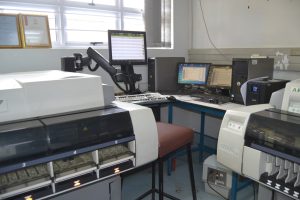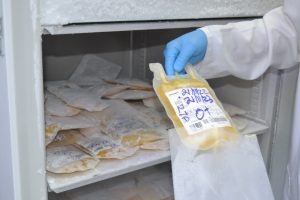Blood Products
WHAT HAPPENS TO DONATED BLOOD AFTER IT LEAVES THE DONOR’S ARM?
Thousands of lives are saved through blood
transfusions in Malawi each day. But have you ever wondered what happens after
a generous individual donates blood? What processes ensure that the blood is
safe and ready for a patient needing blood? The journey of donated blood is a
fascinating one, filled with rigorous testing and careful handling to guarantee
its safety for blood transfusion.
Step 1: Blood Collection and Immediate Storage
Malawi Blood Transfusion Service (MBTS) is the only
body that is mandated to collect and distribute blood in all authorized
hospitals in Malawi. Hence, all blood donors are expected to donate blood
through the trust. During blood donation, the blood is collected in special
bags containing an anticoagulant solution to prevent clotting. This blood is
immediately labelled with a unique barcode to track its journey through testing
and storage. The blood is then placed in a cold chain box to preserve its
quality before it reaches the MBTS laboratories.
Step 2: Testing for Transfusion Transmissible Infections
The donated blood is then transported to MBTS laboratories
where it undergoes testing. One of the first and most important steps is
screening for infectious diseases that could potentially be transmitted through
transfusions. The blood samples are therefore tested for viruses including HIV,
Hepatitis B, Hepatitis C, and Syphilis.
Step 3: Blood Type Verification
Another crucial test ensures that the blood type
matches the donor’s recorded information. A mix-up in blood type can lead to
dangerous reactions in recipients, so confirming the blood group (A, B, AB, or
O, and Rhesus (RhD) factor) is essential. Compatibility testing also extends to
checking for rare antigens that could cause problems in specific recipients.
Step 4: Component Separation
After a successful completion of all tests, the blood is processed to produce blood components which include: whole blood, red cell suspensions, Fresh Frozen Plasma (FFP), Cryoprecipitate and platelet concentrates. Each of these components are used to treat particular medical conditions and are kept for varying durations. For instance, red cell suspensions can be stored for up to 42 days, while plasma can be frozen and stored for up to a year. Platelets, which help with blood clotting, are used within 5 days after production.
Step 5: Final Compatibility Testing
Per its delegated mandate by the Ministry of Health, MBTS supplies safe blood and blood products to all hospitals authorised for the blood transfusion practice in Malawi. However, before the blood is transfused into a patient, a final crossmatch is performed in the hospital laboratory. This involves mixing a sample of the patient’s blood with the donor’s blood to confirm compatibility, thereby minimizing the risk of an adverse reaction.





